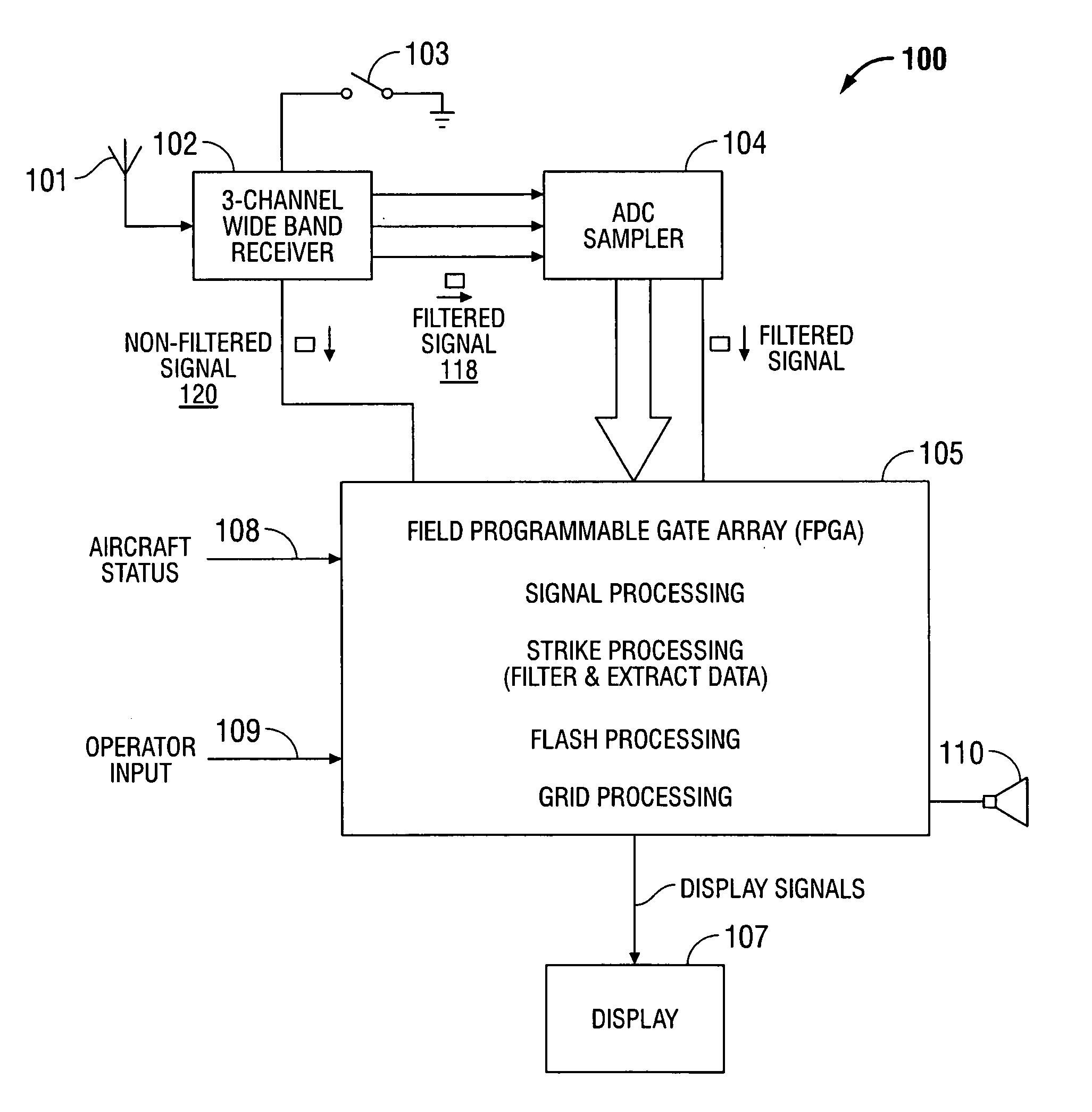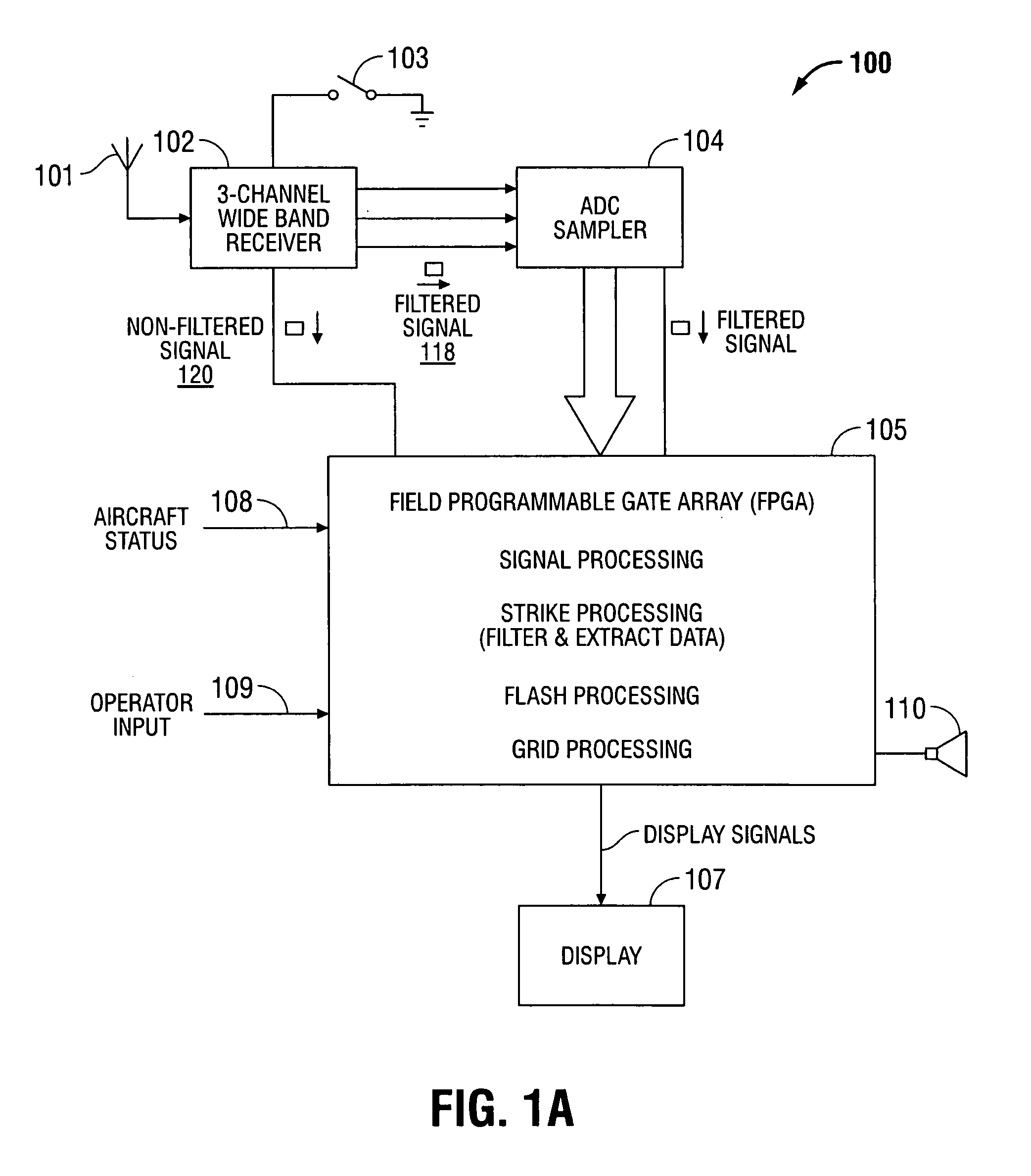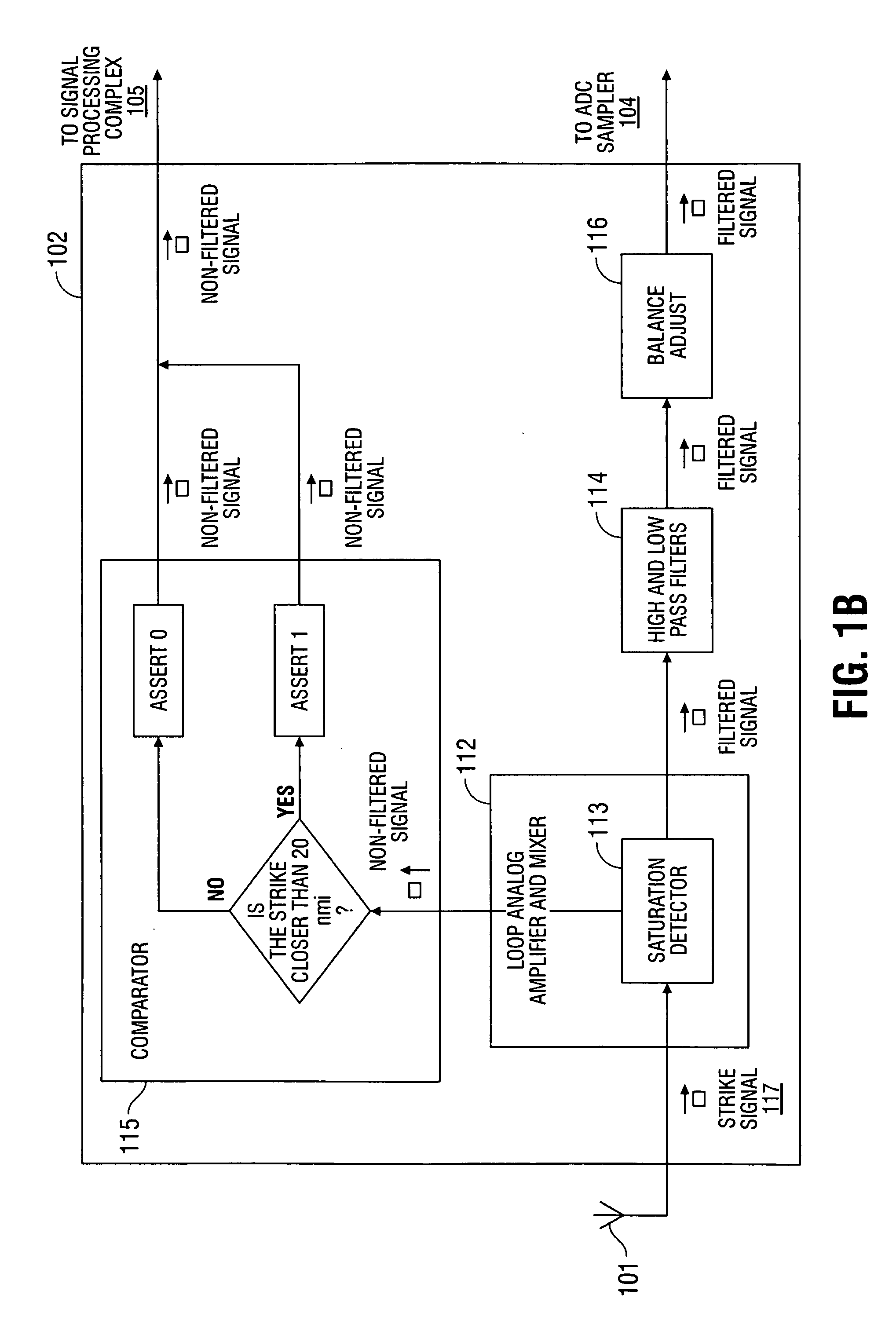Ultra wideband receiver for lightning detection
a wideband receiver and receiver technology, applied in meteorology, instruments, measurement devices, etc., can solve the problems of lightning wreaking havoc on in-flight electronics and instruments, air turbulence that always accompanies electrical storms, and aircraft pilots' problems
- Summary
- Abstract
- Description
- Claims
- Application Information
AI Technical Summary
Benefits of technology
Problems solved by technology
Method used
Image
Examples
Embodiment Construction
[0030]A description of preferred embodiments of the invention follows.
[0031]Although detecting “model” lightning strikes in a perfect clean digital data stream is trivial, it is necessary to be able to identify and reject various noise sources that may have an appearance similar to lightning, and to accurately and consistently identify “real” lighting in the presence of an imperfect or noisy input data stream. When a lighting strike is close enough to a receiver, the strength of the signal received will cause the receiver to saturate. Although the receiver is designed to handle the amplitude of signals received from very close lightning strikes, there is no way to measure the peak amplitude once the receiver output is saturated. When this happens, the amplitude of the strike is measured at the Width Trigger Level (WTL). The WTL is set at a level below saturation, since the width at the saturation level will not change much until well after saturation has occurred. To this end, typic...
PUM
 Login to View More
Login to View More Abstract
Description
Claims
Application Information
 Login to View More
Login to View More - R&D
- Intellectual Property
- Life Sciences
- Materials
- Tech Scout
- Unparalleled Data Quality
- Higher Quality Content
- 60% Fewer Hallucinations
Browse by: Latest US Patents, China's latest patents, Technical Efficacy Thesaurus, Application Domain, Technology Topic, Popular Technical Reports.
© 2025 PatSnap. All rights reserved.Legal|Privacy policy|Modern Slavery Act Transparency Statement|Sitemap|About US| Contact US: help@patsnap.com



